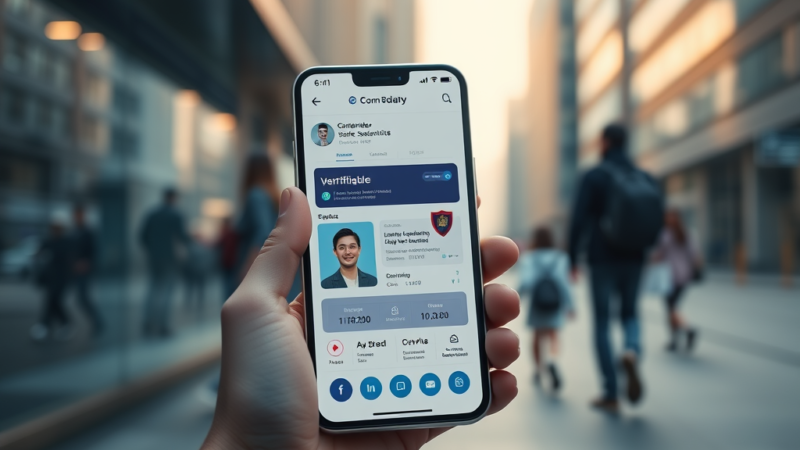Roof Replacement Using Blockchain Technology

In a world driven by technological innovation, Roof Replacement Using Blockchain Technology stands out as a groundbreaking advancement in the roofing industry. Blockchain, often associated with cryptocurrencies, is now being leveraged to revolutionize processes across various sectors, and roofing is no exception. From ensuring transparency to improving operational efficiency, blockchain technology offers immense potential.
This article delves deep into the applications, benefits, and future of blockchain in roof replacement, shedding light on how it’s transforming the industry.
Table of Contents
Introduction to Blockchain Technology
Blockchain is a decentralized digital ledger that records transactions securely and transparently. Each transaction forms a “block,” which is then linked to previous ones, creating an immutable “chain.” Its decentralized nature ensures data integrity, transparency, and security.
When applied to roof replacement, blockchain technology can address challenges like fraud, inefficiencies, and lack of trust between contractors, suppliers, and homeowners.
Why Roofing Needs Blockchain Technology
The roofing industry faces several pain points that blockchain can alleviate:
- Fraud Prevention:
Misrepresentation of materials or services is a recurring issue. Blockchain enables tracking material origins, ensuring authenticity. - Transparency:
Homeowners often struggle to verify if contractors are delivering what was promised. Blockchain ensures all transactions and agreements are transparent. - Efficiency in Documentation:
Traditional methods of documentation are time-consuming and prone to errors. Blockchain simplifies record-keeping through automation and digital contracts.
Applications of Blockchain in Roof Replacement
1. Smart Contracts
Smart contracts are self-executing agreements stored on the blockchain. For roof replacement projects, they automate:
- Payment processing upon milestone completion.
- Verification of material delivery.
- Warranty management for installed roofs.
For example, when a contractor completes a specific task, payment can be released automatically, eliminating disputes.
2. Supply Chain Management
Roof replacement projects rely heavily on materials like shingles, tiles, and underlayment. Blockchain tracks these materials from the manufacturer to the site, ensuring quality and authenticity.
3. Cost Transparency
Blockchain records all transactions, providing an accurate breakdown of costs. Homeowners can see where every dollar is spent, fostering trust and accountability.
4. Insurance Claims
Insurance claims for roof replacements often involve disputes over damage assessment and coverage. Blockchain simplifies this by providing:
- Verified documentation of damages.
- Transparent claims processing.
- Immutable records to settle disputes efficiently.
Benefits of Using Blockchain in Roofing
1. Enhanced Trust Between Stakeholders
Blockchain creates a transparent environment where homeowners, contractors, and suppliers can trust the recorded data.
2. Improved Efficiency
Automated processes, like smart contracts, reduce administrative overhead, allowing faster project completion.
3. Fraud Reduction
Immutable records prevent tampering, ensuring that contracts and transactions remain secure.
4. Better Customer Experience
With clear communication and transparency, homeowners feel more confident in their decisions and are less likely to encounter hidden fees or poor workmanship.
Case Studies: Blockchain in Action
1. Tracking Material Authenticity
In a recent project, a roofing company used blockchain to verify the origin of sustainable materials. This ensured compliance with eco-friendly standards and provided the homeowner with a digital certificate of authenticity.
2. Streamlined Payment Systems
A contractor integrated blockchain-based smart contracts to manage payments. This eliminated payment delays and disputes, as funds were automatically released upon milestone completion.
Challenges in Adopting Blockchain for Roof Replacement
While promising, there are hurdles to implementing blockchain in roofing:
- Cost of Integration:
Initial setup and training require significant investment. - Limited Awareness:
Many roofing professionals are unfamiliar with blockchain, necessitating education and outreach. - Regulatory Concerns:
Blockchain adoption may face legal and compliance issues depending on the region.
Future of Roof Replacement Using Blockchain Technology
The future is bright for Roof Replacement Using Blockchain Technology. As awareness and adoption grow, blockchain is likely to become an industry standard, driving:
- Wider adoption of smart contracts.
- Seamless integration with IoT devices for real-time monitoring.
- Global databases for material tracking and certifications.
How Homeowners Benefit from Blockchain in Roofing
- Peace of Mind:
Blockchain provides an immutable record of all transactions and agreements. - Eco-Friendly Choices:
Homeowners can track and verify sustainable materials, supporting green initiatives. - Efficient Dispute Resolution:
Transparent records eliminate ambiguities, making dispute resolution straightforward.
Steps to Implement Blockchain in Roof Replacement
- Identify Key Processes:
Determine which parts of your roofing operations can benefit most from blockchain. - Partner with Blockchain Providers:
Collaborate with technology providers who specialize in blockchain for construction. - Educate Stakeholders:
Train your team and clients on the benefits and use of blockchain. - Test Before Full Deployment:
Start with small-scale projects to identify potential challenges and refine processes.
Common Misconceptions About Blockchain in Roofing
1. It’s Only for Big Companies
Small and medium-sized businesses can also leverage blockchain to streamline operations and enhance trust.
2. It’s Too Complicated
While the technology may seem complex, user-friendly platforms simplify integration and usage.
3. It’s Expensive
Though initial costs can be high, the long-term savings in efficiency and fraud prevention outweigh the investment.
FAQs
1. What is blockchain technology?
Blockchain is a decentralized digital ledger that records transactions securely and transparently.
2. How does blockchain benefit roof replacement?
Blockchain enhances transparency, reduces fraud, and streamlines processes like payments and material tracking in roof replacement.
3. Are smart contracts secure?
Yes, smart contracts are tamper-proof and execute automatically based on predefined conditions.
4. Can blockchain track sustainable roofing materials?
Absolutely. Blockchain ensures material authenticity and compliance with eco-friendly standards.
5. What are the challenges of using blockchain in roofing?
Initial costs, limited awareness, and regulatory hurdles are common challenges.
6. Is blockchain only for large-scale projects?
No, blockchain can be adapted for projects of any size to improve transparency and efficiency.
Stay tuned for daily cryptocurrency news!
Conclusion
Roof Replacement Using Blockchain Technology is a transformative approach that addresses industry challenges like fraud, inefficiencies, and lack of trust. By embracing blockchain, the roofing industry can achieve unprecedented levels of transparency, efficiency, and customer satisfaction.
Whether you’re a contractor, supplier, or homeowner, now is the time to explore the immense potential of blockchain in roof replacement.



